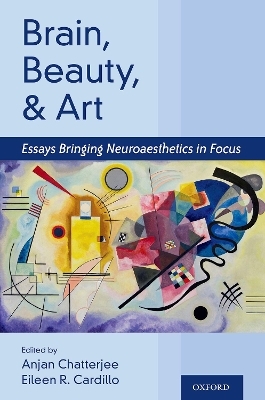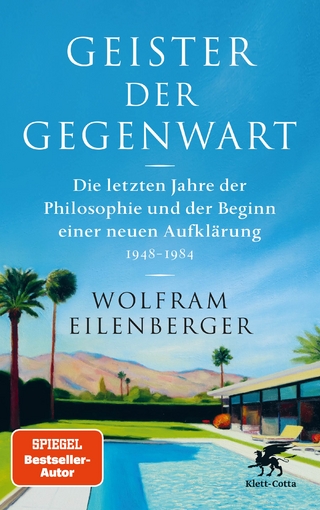
Brain, Beauty, and Art
Oxford University Press Inc (Verlag)
978-0-19-751362-0 (ISBN)
- Lieferbar (Termin unbekannt)
- Versandkostenfrei innerhalb Deutschlands
- Auch auf Rechnung
- Verfügbarkeit in der Filiale vor Ort prüfen
- Artikel merken
In Brain, Beauty, and Art, leading scholars in this nascent field reflect on the promise of neuroaesthetics to enrich our understanding of this universal yet diverse facet of human experience. The volume consists of essays from foundational researchers whose empirical work launched the field. Each essay is anchored to an original, peer-reviewed paper from the short history of this new and burgeoning subdiscipline of cognitive neuroscience. Authors of each essay were asked three questions: 1) What motivated the original paper? 2) What were the main findings or theoretical claims made? and, 3) How do those findings or claims fit with the current state and anticipated near future of neuroaesthetics? Together, these essays establish the territory and current boundaries of neuroaesthetics and identify its most promising future directions. Topics include models of neuroaesthetics, and discussions of beauty, art, dance, music, literature, and architecture.
Brain, Beauty, and Art will inform and stimulate anyone with an abiding interest in why it is that, across time and culture, we respond to beauty, engage with art, and are affected by music and architecture.
Anjan Chatterjee is a Professor of Neurology, Psychology, and Architecture and the founding Director of the Penn Center for Neuroaesthetics. He wrote The Aesthetic Brain: How we evolved to desire beauty and enjoy art and co-edited: Neuroethics in Practice: mind, medicine, and society, and The Roots of Cognitive Neuroscience: behavioral neurology and neuropsychology. He has received the Norman Geschwind Prize in Behavioral and Cognitive Neurology and the Rudolph Arnheim Prize for contribution to Psychology and the Arts. He is or has been in the editorial board of several journals focused in neuroscience, neurology, ethics, and aesthetics. He is a founding member of the Board of Governors of the Neuroethics Society, the past President of the International Association of Empirical Aesthetics, and the past President of the Behavioral and Cognitive Neurology Society Eileen Cardillo, DPhil is a cognitive neuroscientist and Associate Director of the Penn Center for Neuroaesthetics. She received her B.S. in Biological Psychology at the College of William & Mary and her doctorate in Experimental Psychology while a Rhodes Scholar at the University of Oxford. Before joining the PCfN, Eileen completed her postdoctoral training at the University of California San Diego and the University of Pennsylvania, with an emphasis on neuropsychological studies of cognition. Her research interests include metaphor, contemplative practice, and the cognitive, affective, and health impacts of aesthetic experiences
Foreword. Where have we been and where are now? A Chatterjee, E Cardlillo
Frameworks
1. An early framework for a cognitive neuroscience of visual aesthetics. A Chatterjee
2. Bringing it all together: neurological and neuroimaging evidence of the neural underpinnings of visual aesthetic. M Nadal, CJ Cela-Conde
3. But, what actually happens when we engage with art? M Pelowski, H Leder
4. Naturalizing aesthetics. Steven Brown
5. Moving towards emotions in the aesthetic experience. C Di Dio and V Gallese
6. The aesthetic triad. O Vartanian and A Chatterjee
7. How neuroimaging is transforming our understanding of aesthetic taste. M Skov
8. The cognitive neuroscience of aesthetic experience. M Nadal and M Pearce
Beauty
9. Facial beauty and the medial orbitofrontal cortex. JP O'Doherty, RJ. Dolan
10. Beautiful people in the brain of the beholder. A Chatterjee
11. The mark of villainy: the connection between appearance and perceived morality. F Hartung
12. A quest for beauty. T Jacobsen
13. Scene preferences, aesthetic appeal and curiosity: revisiting the neurobiology of the infovore. EA Vessel, X Yue, I Biederman
14. Kinds of beauty and the prefrontal cortex. T Pegors
15. Expertise and aesthetic liking. M Skov & U Kirk
16. Social meaning brings beauty: neural response to the beauty of abstract Chinese characters. X He and W Zhang
Art
17. The contributions of emotion and reward to aesthetic judgment of visual art. O Vartanian
18. Embodiment and the aesthetic experience of images. V Gallese, D Freedberg, M Alessandra Umiltà
19. The role of left dorsolateral prefrontal cortices in aesthetic valuation. E Munar & CJ Cela-Conde
20. The role of the dorsolateral prefrontal cortex in aesthetic appreciation. M Nadal, Z Cattaneo, and CJ Cela-Conde
21. Is artistic composition in abstract art detected automatically? C Menzel, G Kovács, GU Hayn-Leichsenring, C Redies
22. The contribution of visual area V5 to the perception of implied motion in art and its appreciation. M Nadal and Z Cattaneo
23. Art Is Its own reward. S Lacey, K Sathian
24. Imaging the subjective. EA Vessel, GG Starr
25. Cultural neuroaesthetics of delicate sadness induced by Noh masks. N Osaka
26. Towards a computational understanding of neuroaesthetics. K Iigaya and JP O'Doherty
27. Artists, artworks, aesthetics, cognition. WP Seeley
28. Aesthetic liking is not only driven by object properties, but also by your expectations. M Skov, U Kirk
29. Finding mutual interest between neuroscience and aesthetics: a brush with reality? AJ Parker
30. What can we learn about art from people with neurological disease? A Chatterjee
Music
31. Chills, Bets, And Dopamine: a journey Into music reward. L Ferreri, J Riba, R Zatorre, A Rodriguez-Fornells
32. Why does music evoke strong emotions? Testing the endogenous opioid hypothesis. DJ Levitin and LA Fleming
33. Music in all its beauty: adopting the naturalistic paradigm to uncover brain processes during the aesthetic musical experience. E Brattico and V Alluri
34. Investigating musical emotions in people with unilateral brain damage. AM Belfi, A Pralus, C Hirel, D Tranel, B Tillmann*, A Caclin*
Language and Literature
35. The neurocognitive poetics model of literary reading 10 years after. AM Jacobs
36. The power of poetry. E Wassiliwizky, W Menninghaus
37. Pictograph portrays what it is: neural response to the beauty of concrete Chinese characters. X He and W Zhang
Dance
38. Movement, synchronization, and partnering in dance. S Brown
39. Dance, expertise and sensorimotor aesthetics. B Calvo-Merino
40. An eye for the impossible: exploring the attraction of physically impressive dance movements. ES Cross
41. The mind, the brain and the moving body: dance as a topic in cognitive neuroscience. B Blaesing, B Calvo-Merino
42. Training effects on affective perception of body movements. LP Kirsch, ES Cross
Architecture
43. The neuroaesthetics of architecture. O Vartanian
44. Architectural styles as subordinate scene categories. DB Walther
45. Architectural affordances: linking action, perception, and cognition. Z Djebbara, K Gramann
46. Architectural design and the mind. A Coburn
Afterword. Where are we now and where are we going? A Chatterjee, E Cardlillo
| Erscheinungsdatum | 15.11.2021 |
|---|---|
| Verlagsort | New York |
| Sprache | englisch |
| Maße | 165 x 241 mm |
| Gewicht | 503 g |
| Themenwelt | Geisteswissenschaften ► Philosophie ► Allgemeines / Lexika |
| Geisteswissenschaften ► Psychologie | |
| Naturwissenschaften ► Biologie ► Humanbiologie | |
| Naturwissenschaften ► Biologie ► Zoologie | |
| ISBN-10 | 0-19-751362-X / 019751362X |
| ISBN-13 | 978-0-19-751362-0 / 9780197513620 |
| Zustand | Neuware |
| Informationen gemäß Produktsicherheitsverordnung (GPSR) | |
| Haben Sie eine Frage zum Produkt? |
aus dem Bereich


